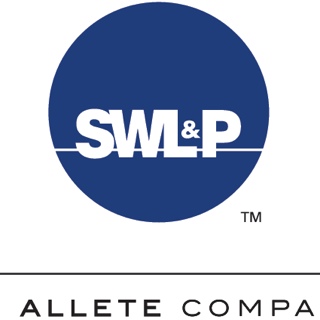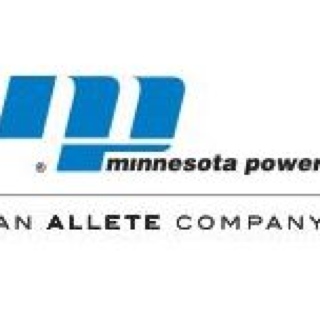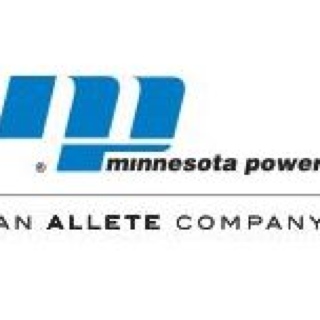Information
-
Facility Safety Evaluation Location
-
Conducted on
-
Personnel
1.0 Facility Safety: Egress, Floors, Loads
-
1.1 All places of employment, passageways, storerooms, and service rooms shall be kept clean and orderly and in a sanitary condition.<br><br>(29 CFR 1910. 22(a)(1))
Item
-
-
Location:
-
Description:
-
Photo:
-
1.2 Every open-sided floor or platform 4 feet or more above adjacent floor or ground level shall be guarded by a standard railing (or the equivalent as specified in paragraph (e)(3) of this section) on all open sides except where there is entrance to a ramp, stairway, or fixed ladder. The railing shall be provided with a toeboard wherever, beneath the open sides.<br><br>(29 CFR 1910.23(c)(1))
Item
-
-
Location:
-
Description:
-
Photo:
-
1.3 Exit routes must be free and unobstructed. No materials or equipment may be placed, either permanently or temporarily, within the exit route. The exit access must not go through a room that can be locked, such as a bathroom, to reach an exit or exit discharge, nor may it lead into a dead-end corridor. Stairs or a ramp must be provided where the exit route is not substantially level.<br><br>(29 CFR 1910.37(a)(3)
Item
-
-
Location:
-
Description:
-
Photo:
-
1.4 Each exit route must be adequately lighted so that an employee with normal vision can see along the exit route.<br><br>(29 CFR 1910.37(b)(1))
Item
-
-
Location:
-
Description:
-
Photo:
-
1.5 Each exit must be clearly visible and marked by a sign reading "Exit”.<br><br>(29 CFR 1910.37(b)(2))
Item
-
-
Location:
-
Description:
-
Photo:
-
1.6 If the direction of travel to the exit or exit discharge is not immediately apparent, signs must be posted along the exit access indicating the direction of travel to the nearest exit and exit discharge. Additionally, the line-of-sight to an exit sign must clearly be visible at all times.<br><br>(29 CFR 1910.37(b)(4))
Item
-
-
Location:
-
Description:
-
Photo:
-
1.7 Each doorway or passage along an exit access that could be mistaken for an exit must be marked "Not an Exit" or similar designation, or be identified by a sign indicating its actual use (e.g., closet).<br><br>(29 CFR 1910.37(b)(5))
Item
-
-
Location:
-
Description:
-
Photo:
2.0 Flammable Storage
-
2.1 The quantity of liquid that may be located outside of an inside storage room or storage cabinet in a building or in any one fire area of a building shall not exceed:<br><br> 25 gallons of Category 1 flammable liquids in containers<br> 120 gallons of Category 2, 3, or 4 flammable liquids in containers<br> 660 gallons of Category 2, 3, or 4 flammable liquids in a single portable tank<br><br>(29 CFR 1910.106(e)(2)(ii)(b))
Item
-
-
Location:
-
Description:
-
Photo:
-
2.2 Containers in storage shall be located so as to minimize exposure to excessive temperature rise, physical damage, or tampering by unauthorized persons. Containers when stored inside shall not be located near exits, stairways, or in areas normally used or intended for the safe exit of people.<br><br>(29 CFR 1910.110(f)(2)(ii))
Item
-
-
Location:
-
Description:
-
Photo:
3.0 Personal Protective Equipment
-
3.1 Appropriate PPE is being worn based on the task being completed and/or signage in the work area. <br><br>(29 CFR 1910.132(d)(1))
Item
-
-
Location:
-
Description:
-
Photo:
-
3.2 Respirators are being stored in a sanitary location when not in use.<br><br>(29 CFR 1910.134(h)(1)
Item
-
-
Location:
-
Description:
-
Photo:
4.0 LOTO Program
-
4.1 Lockout or tagout device application.<br><br>1. Lockout or tagout devices shall be affixed to each energy isolating device by authorized employees.<br><br>2. Lockout devices, where used, shall be affixed in a manner to that will hold the energy isolating devices in a "safe" or "off" position.<br><br>3. Tagout devices, where used, shall be affixed in such a manner as will clearly indicate that the operation or movement of energy isolating devices from the "safe" or "off" position is prohibited.<br><br>4. Where tagout devices are used with energy isolating devices designed with the capability of being locked, the tag attachment shall be fastened at the same point at which the lock would have been attached.<br><br>5. Where a tag cannot be affixed directly to the energy isolating device, the tag shall be located as close as safely possible to the device, in a position that will be immediately obvious to anyone attempting to operate the device.<br><br>(29 CFR 1910.147(d)(4))
Item
-
-
Location:
-
Non-compliant item(s):
- 1.
- 2.
- 3.
- 4.
- 5.
-
Description:
-
Photo:
5.0 Industrial Trucks
-
5.1 The employer shall ensure that each powered industrial truck operator is competent to operate a powered industrial truck safely, as demonstrated by the successful completion of the training and evaluation specified in this paragraph (l).<br><br>(29 CFR 1910.178(l)(1))
Item
-
-
Location:
-
Description:
-
Photo:
-
5.2 Industrial trucks shall be examined before being placed in service, and shall not be placed in service if the examination shows any condition adversely affecting the safety of the vehicle. Such examination shall be made at least daily. Where industrial trucks are used on a round-the-clock basis, they shall be examined after each shift. Defects, when found, shall be immediately reported and corrected.<br><br>(29 CFR 1910.178(q)(7))
Item
-
-
Location:
-
Description:
-
Photo:
-
5.3 Under all travel conditions the forklift is operated at a speed that will permit it to be brought to a stop in a safe manner. <br><br>(29 CFR 1910.178(h)(8))
Item
-
-
Location:
-
Description:
-
Photo:
-
5.4 The facility has Carbon Monoxide Testing Results for propane fueled industrial trucks.<br><br>(29 CFR 1910.178(i)(1))
Item
-
-
Location:
-
Description:
-
Photo:
6.0 Machine & Equipment Guarding
-
6.1 Types of guarding.<br><br>One or more methods of machine guarding shall be provided to protect the operator and other employees in the machine area from hazards such as those created by point of operation, ingoing nip points, rotating parts, flying chips and sparks. Examples of guarding methods are-barrier guards, two-hand tripping devices, electronic safety devices, etc.<br><br>(29 CFR 1910.212(a)(1))
Item
-
-
Location:
-
Description:
-
Photo:
-
6.2 Exposure of blades.<br><br>When the periphery of the blades of a fan is less than seven (7) feet above the floor or working level, the blades shall be guarded. The guard shall have openings no larger than one-half (1/2) inch.<br><br>(29 CFR 1910.212(a)(5))
Item
-
-
Location:
-
Description:
-
Photo:
-
6.3 Anchoring fixed machinery.<br><br>Machines designed for a fixed location shall be securely anchored to prevent walking or moving.<br><br>(29 CFR 1910.212(b))
Item
-
-
Location:
-
Description:
-
Photo:
-
6.4 Bench grinder work rests are adjusted and all guards are in place.<br><br>(29 CFR 1910.215)
Item
-
-
Location:
-
Description:
-
Photo:
7.0 Electric Power Transmission & Distribution
-
7.1 Employees conduct a Pre-job briefing prior to conducting work.<br><br>(29 CFR 1910.269(c))
Item
-
-
Location:
-
Description:
-
Photo:
-
7.2 Condition of tools.<br><br>1. Each live-line tool shall be wiped clean and visually inspected for defects before use each day.<br><br>2. If any defect or contamination that could adversely affect the insulating qualities or mechanical integrity of the live-line tool is present after wiping, the tool shall be removed from service and examined and tested according to paragraph (j)(2)(iii) of this section before being returned to service.<br><br>(29 CFR 1910.269(j)(2)(ii))
Item
-
-
Location:
-
Non-compliant item(s):
- 1.
- 2.
-
Description:
-
Photo:
-
7.3 Deenergized lines and equipment for employee protection.<br><br>1. All switches, disconnectors, jumpers, taps, and other means through which known sources of electric energy may be supplied to the particular lines and equipment to be deenergized shall be opened. Such means shall be rendered inoperable, unless its design does not so permit, and tagged to indicate that employees are at work.<br><br>2. Automatically and remotely controlled switches that could cause the opened disconnecting means to close shall also be tagged at the point of control. The automatic or remote control feature shall be rendered inoperable, unless its design does not so permit.<br><br>3. Tags shall prohibit operation of the disconnecting means and shall indicate that employees are at work.<br><br>4. Employee in charge of the work has been given a clearance by the system operator, the lines and equipment to be worked shall be tested to ensure that they are deenergized.<br><br>5. Protective grounds shall be installed.<br><br>(29 CFR 1910.269(m)(3)(ii))
Item
-
-
Location:
-
Non-compliant item(s):
- 1.
- 2.
- 3.
- 4.
- 5.
-
Description:
-
Photo:
8.0 General Electrical
-
8.1 Installation and use. <br><br>Listed or labeled equipment shall be installed and used in accordance with any instructions included in the listing or labeling. <br><br>(29 CFR 1910.303(b)(2))
Item
-
-
Location:
-
Description:
-
Photo:
-
8.2 Motors and appliances.<br><br>Each disconnecting means required by this subpart for motors and appliances shall be legibly marked to indicate its purpose, unless located and arranged so the purpose is evident.<br><br>(29 CFR 1910.303(f))
Item
-
-
Location:
-
Description:
-
Photo:
-
8.3 Services, feeders, and branch circuits.<br><br>Each service, feeder, and branch circuit, at its disconnecting means or overcurrent device, shall be legibly marked to indicate its purpose, unless located and arranged so the purpose is evident.<br><br>(29 CFR 1910.303(f)(2))
Item
-
-
Location:
-
Description:
-
Photo:
-
8.4 Working space required by this standard may not be used for storage.<br><br>When normally enclosed live parts are exposed for inspection or servicing, the working space, if in a passageway or general open space, shall be suitably guarded. <br><br>(29 CFR 1910.303(g)(1)(ii))
Item
-
-
Location:
-
Description:
-
Photo:
-
8.5 Live parts of electric equipment operating at 50 volts or more shall be guarded against accidental contact by use of approved cabinets or other forms of approved enclosures or by any of the following means:<br><br>1. By location in a room, vault, or similar enclosure that is accessible only to qualified persons;<br><br>2. By suitable permanent, substantial partitions or screens so arranged so that only qualified persons will have access to the space within reach of the live parts. Any openings in such partitions or screens shall be so sized and located that persons are not likely to come into accidental contact with the live parts or to bring conducting objects into contact with them;<br><br>3. By placement on a suitable balcony, gallery, or platform so elevated and otherwise located as to prevent access by unqualified persons; or<br><br>4. By elevation of 2.44 m (8.0 ft) or more above the floor or other working surface.<br><br>5. In locations where electric equipment is likely to be exposed to physical damage, enclosures or guards shall be so arranged and of such strength as to prevent such damage.<br><br>6. Entrances to rooms and other guarded locations containing exposed live parts shall be marked with conspicuous warning signs forbidding unqualified persons to enter. <br><br>(29 CFR 1910.303(g)(2)(i))<br>
Item
-
-
Location:
-
Non-compliant item(s):
- 1.
- 2.
- 3.
- 4.
- 5.
- 6.
-
Description:
-
Photo:
-
8.6 Work space about equipment.<br><br>Sufficient space shall be provided and maintained about electric equipment to permit ready and safe operation and maintenance of such equipment. Where energized parts are exposed, the minimum clear work space may not be less than 1.98 m (6.5 ft) high (measured vertically from the floor or platform) or less than 914 mm (3.0 ft) wide (measured parallel to the equipment). The depth shall be as required in paragraph (h)(5)(i) of this section. In all cases, the work space shall be adequate to permit at least a 90-degree opening of doors or hinged panels. <br><br>(29 CFR 1910.303(h)(3)(i))
Item
-
-
Location:
-
Description:
-
Photo:
9.0 Electrical Wiring
-
9.1 Temporary wiring.<br><br>1. During and for remodeling, maintenance, or repair of buildings, structures, or equipment, and similar activities;<br><br>2. For a period not to exceed 90 days for Christmas decorative lighting, carnivals, and similar purposes;<br><br>3. For experimental or development work, and during emergencies.<br><br>4. No bare conductors nor earth returns may be used for the wiring of any temporary circuit.<br><br>5. All lamps for general illumination shall be protected from accidental contact or breakage by a suitable fixture or lamp-holder with a guard. Brass shell, paper-lined sockets, or other metal-cased sockets may not be used unless the shell is grounded.<br><br>6. Flexible cords and cables shall be protected from accidental damage, as might be caused, for example, by sharp corners, projections, and doorways or other pinch points.<br><br>7. Cable assemblies and flexible cords and cables shall be supported in place at intervals that ensure that they will be protected from physical damage. Support shall be in the form of staples, cables ties, straps, or similar type fittings installed so as not to cause damage.<br><br>(29 CFR 1910.305(a)(2))
Item
-
-
Location:
-
Non-compliant item(s):
- 1.
- 2.
- 3.
- 4.
- 5.
- 6.
- 7.
-
Description:
-
Photo:
-
9.2 Conductors entering boxes, cabinets, or fittings.<br><br>1. Conductors entering cutout boxes, cabinets, or fittings shall be protected from abrasion, and openings through which conductors enter shall be effectively closed.<br><br>2. Unused openings in cabinets, boxes, and fittings shall be effectively closed.<br><br>(29 CFR 1910.305(b)(1))
Item
-
-
Location:
-
Non-compliant item(s):
- 1.
- 2.
-
Description:
-
Photo:
-
9.3 Covers and canopies.<br><br>All pull boxes, junction boxes, and fittings shall be provided with covers identified for the purpose. If metal covers are used, they shall be grounded. In completed installations, each outlet box shall have a cover, faceplate, or fixture canopy. Covers of outlet boxes having holes through which flexible cord pendants pass shall be provided with bushings designed for the purpose or shall have smooth, well-rounded surfaces on which the cords may bear.<br><br>(29 CFR 1910.305(b)(2))
Item
-
-
Location:
-
Description:
-
Photo:
-
9.4 Unless specifically permitted otherwise, flexible cords and cables may not be used:<br><br>1. As a substitute for the fixed wiring of a structure;<br>2. Where run through holes in walls, ceilings, or floors;<br>3. Where run through doorways, windows, or similar openings;<br>4. Where attached to building surfaces;<br>5. Where concealed behind building walls, ceilings, or floors; or<br>6. Where installed in raceways, except as otherwise permitted in this subpart. <br><br>(29 CFR 1910.305(g)(1)(iv))
Item
-
-
Location:
-
Non-compliant item(s):
- 1.
- 2.
- 3.
- 4.
- 5.
- 6.
-
Description:
-
Photo:
10.0 Excavations
-
10.1 Where excavation work is taking place, an excavation entry permit has been completely filled out prior to entry.
Item
-
-
Location:
-
Description:
-
Photo:
-
10.2 Where excavations are 5 feet or deeper, cave-in protection (trench box, shoring, benching/sloping) is used.<br><br>(29 CFR 1926.652(a)(1))
Item
-
-
Location:
-
Description:
-
Photo:
-
10.3 Excavation spoils are kept 2 feet from the edge of the excavation.<br><br>(29 CFR 1926.651(i)(2))
Item
-
-
Location:
-
Description:
-
Photo:
-
10.4 Where excavations are 4 feet or deeper, a ladder or ramp is installed and located within 25 feet from any employee.<br><br>(29 CFR 1926.651(c)(2))
Item
-
-
Location:
-
Description:
-
Photo:
11.0 Hazardous Communication (RTK)
-
11.1 Each container of hazardous chemicals leaving the workplace is labeled, tagged, or marked.<br><br>(29 CFR 1910.1200(f)(5))
Item
-
-
Location:
-
Description:
-
Photo:
-
11.2 The employer shall maintain in the workplace copies of the required safety data sheets for each hazardous chemical, and shall ensure that they are readily accessible during each work shift to employees when they are in their work area(s).<br><br>(29 CFR 1910.120(g)(8))
Item
-
-
Location:
-
Description:
-
Photo:
12.0 General Duty
-
12.1 Crane/hoist capacities are present and controls are labeled.<br><br>(29 CFR 1910.179)
Item
-
-
Location:
-
Description:
-
Photo:
Sign Off
-
On site representative
-
On site representative
-
Auditor
-
Auditor
-
Auditor
-
Auditor
-
Auditor
-
Auditor
-
Auditor
-
Auditor
-
Add drawing








